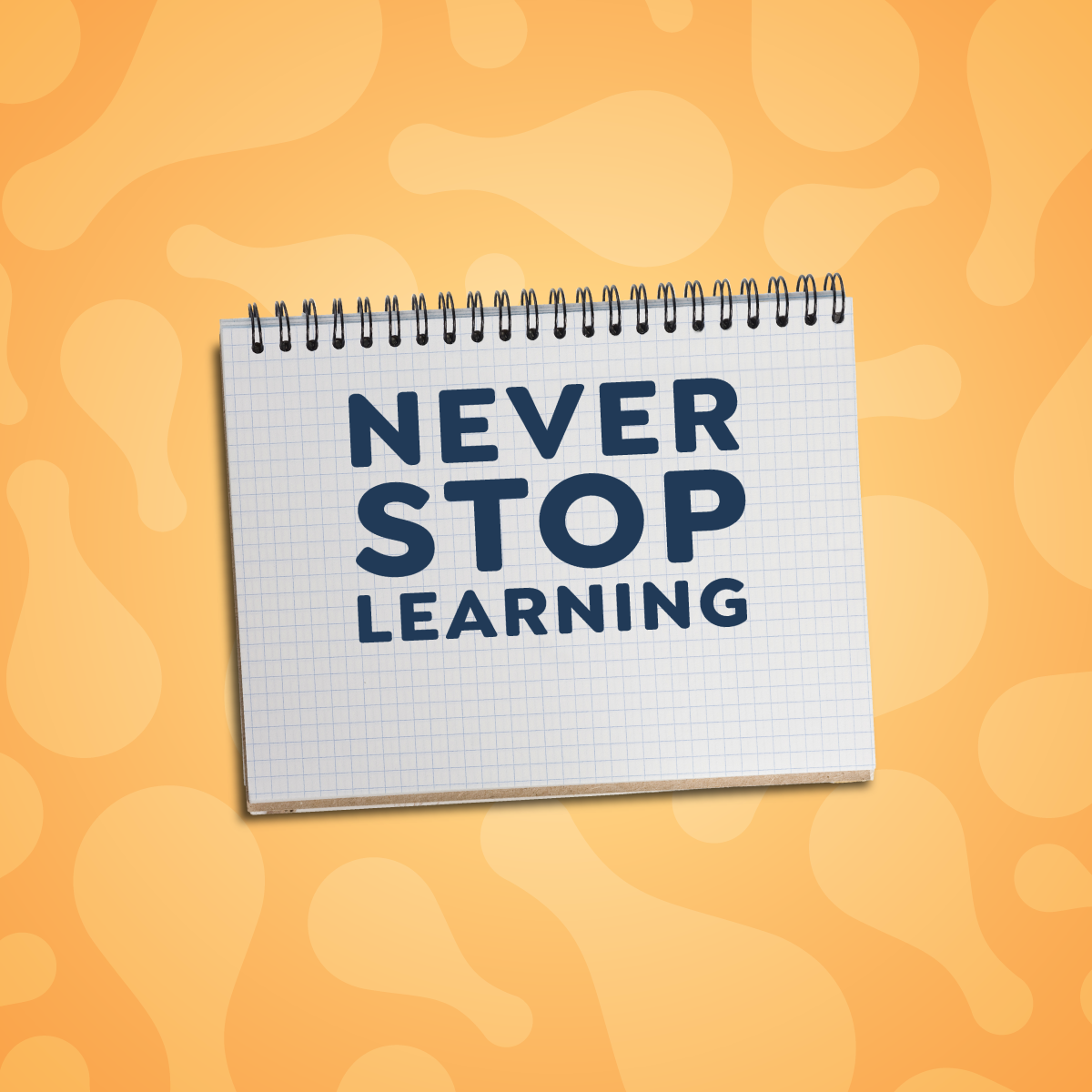A Tale of Two Classrooms
Consider two students in adjacent classrooms, separated only by a wall, yet worlds apart in their educational experience. In one room, students are racing forward, each lesson a stepping stone on a hurried path dictated by calendars and bells. Mistakes become permanent scars on their records, misunderstandings buried beneath the march forward. Next door, students revisit, reflect, and persist—each learner working until mastery, until understanding blossoms, until every concept is fully grasped. The difference? Mastery learning (Guskey, 2010).
Recent data underscores the urgency of effective educational interventions. The 2024 National Assessment of Educational Progress (NAEP) results show significant declines in reading and math scores, highlighting continued educational setbacks that began pre-pandemic and have persisted, particularly affecting lower-performing students and widening existing gaps (K12 Dive, 2024).
A Promise of Equity
Mastery learning isn’t merely a methodology—it’s a promise. It’s the assertion that every child, given adequate time and the right support, can master any skill, any knowledge, no matter their background, language, or starting point (Guskey, 2010). But why does this matter so profoundly, especially now?
Understanding the Opportunity Gap
Across our nation’s schools, a pervasive shadow lingers—the opportunity gap, often misunderstood as an achievement gap. But let’s be clear: this gap is not about students’ potential; it’s about the uneven terrain of educational opportunity. According to the Close the Gap Foundation (2023), the opportunity gap refers to the unequal or inequitable distribution of resources and opportunities, affecting educational outcomes, career prospects, and life aspirations. Mastery learning transforms this landscape. It’s more than education reform; it’s equity in action. It’s about dismantling barriers built by centuries of systemic neglect, recognizing every child’s innate capability, and offering tailored pathways toward success.
Compelling Evidence for Mastery Learning
The evidence behind mastery learning is compelling. Decades of rigorous research reveal clear patterns: students in mastery-based environments consistently outperform their peers, demonstrating not only higher academic achievement but increased confidence and persistence. The model actively reduces disparities, lifting students historically underserved by traditional, time-bound instruction (Guskey, 2010).
John Hattie’s extensive research further supports mastery learning, highlighting it as one of the most impactful educational strategies, with an effect size well above the threshold of typical growth (Hattie, 2023). Hattie emphasizes the importance of clear success criteria, immediate feedback, and the opportunity for students to revisit and refine their learning, all key components of mastery learning. hile inquiry-based approaches can spark curiosity and active participation, their effectiveness often hinges on careful scaffolding and explicit instructional support.
While inquiry-based learning, frequently championed in modern classrooms, has been linked with diminished academic performance, this does not imply sacrificing authentic student engagement. John Sweller (2021) identifies a causal link between heightened reliance on inquiry learning and declining academic outcomes, attributing this to constraints like limited working memory and cognitive overload. Sweller outlines specific strategies to counter these limitations, emphasizing:
- Deliberate practice
- Explicit instruction
- Worked examples
- Gradual transition to independence
- Reducing cognitive load through guided learning
By coupling these structured approaches with reflection, self-assessment, and revision, educators can effectively advance learner agency without forfeiting genuine student engagement.
Learner agency refers to the capacity and power of students to act purposefully and constructively to direct their own learning experiences. It involves learners taking ownership, making informed choices, setting meaningful goals, and reflecting critically to guide their academic and personal growth. By integrating explicit instructional strategies with reflective and self-regulatory practices, educators not only mitigate cognitive load but also empower students to become active agents in their learning journeys.
Personalized Learning through Adaptive Technology
 A crucial complement to mastery learning is personalized learning facilitated by computer-adaptive technologies such as i-Ready, DreamBox, Khan Academy, IXL, and Intelligent Tutoring Systems (ITS). These platforms dynamically tailor instruction to each student’s unique needs, allowing learners to progress at their own pace based on real-time performance data.
A crucial complement to mastery learning is personalized learning facilitated by computer-adaptive technologies such as i-Ready, DreamBox, Khan Academy, IXL, and Intelligent Tutoring Systems (ITS). These platforms dynamically tailor instruction to each student’s unique needs, allowing learners to progress at their own pace based on real-time performance data.
Evidence from independent, external studies includes:
- i-Ready (Reading)
A quasi-experimental evaluation involving over 70,000 K–5 students found that consistent use of i-Ready reading instruction led to statistically significant gains in reading achievement (HumRRO & Century Analytics, 2019).
- i-Ready (Mathematics for Striving Learners)
An external evaluation conducted by HumRRO and Century Analytics (2020) demonstrated significant improvements in mathematics achievement for students performing below grade level, particularly among historically underserved populations, with effect sizes ranging from modest to strong.
- DreamBox Learning
Randomized controlled trials indicate substantial academic impacts for DreamBox, earning a “Strong” rating under ESSA standards. The average effect sizes range from +0.10 to +0.16 standard deviations, translating into meaningful percentile improvements typically between +4 and +10 points (Wang & Woodworth, 2011; Evidence for ESSA, 2024).
- Khan Academy
A study by Murphy et al. (2014) reported significant test score improvements, particularly in mathematics, for lower-performing students using Khan Academy in blended classroom settings.
- IXL
External reviews, including randomized controlled trials, indicate IXL significantly boosts math achievement. Studies report average effect sizes around +0.11 to +0.13 SD, translating to notable percentile improvements on standardized tests, particularly benefiting historically underserved student groups (Johns Hopkins CRRE, 2023; Empirical Education, 2013).
- Intelligent Tutoring Systems (ITS)
Meta-analyses of ITS platforms reveal large impacts, with median effect sizes around +0.66 SD, capable of moving students from the 50th to the 75th percentile, highlighting ITS as highly effective for personalized learning (Kulik & Fletcher, 2016).
Critically, research emphasizes the importance of the human element in personalized learning. Effective teacher facilitation, including guided student reflection, explicit goal setting, and meaningful discussions about progress, substantially enhances the impact of adaptive technologies (Pane et al., 2017). When educators actively engage students in reflecting on their progress and setting clear, personalized learning goals, students are more likely to perceive and appreciate their academic growth, fostering greater motivation and ownership of their learning journey.
These adaptive tools, supported by intentional teacher guidance, align seamlessly with mastery learning principles by offering deliberate practice, immediate feedback, and self-paced progression, empowering educators to personalize learning pathways and effectively reduce opportunity gaps.
The Power of Metacognitive Clarity
 Mastery learning doesn’t only address academics—it profoundly cultivates metacognitive clarity and nurtures a healthy learner identity. Metacognitive clarity—the explicit awareness of one’s own thinking and learning processes—empowers students to become architects of their educational journeys. Rather than passively absorbing information, students reflect on their progress, assess their understanding, and actively seek strategies to deepen their learning. They don’t just learn; they learn how to learn (Bloomberg & Wells, forthcoming 2025).
Mastery learning doesn’t only address academics—it profoundly cultivates metacognitive clarity and nurtures a healthy learner identity. Metacognitive clarity—the explicit awareness of one’s own thinking and learning processes—empowers students to become architects of their educational journeys. Rather than passively absorbing information, students reflect on their progress, assess their understanding, and actively seek strategies to deepen their learning. They don’t just learn; they learn how to learn (Bloomberg & Wells, forthcoming 2025).
Equally essential to mastery learning is cultivating a healthy learner identity, defined by Guy Claxton as the beliefs, attitudes, and narratives learners hold about themselves regarding their ability to learn. Crucially, learner identity is context-specific—it varies based on the subject area, the learning environment, and past experiences within those settings (Claxton, 2021). A student might hold a strong, healthy learner identity in mathematics, confidently approaching complex problems, while simultaneously feeling anxious or less capable in reading or writing.
A robust learner identity matters profoundly because it fuels self-efficacy—the belief in one’s own capacity to achieve goals, persist through challenges, and master new skills. According to extensive research by John Hattie (2023), heightened self-efficacy significantly accelerates student learning. Students who view themselves as capable learners engage more actively with challenging content, persist through difficulties, and seek deeper understanding. By intentionally fostering a healthy learner identity within mastery-based environments, educators enable students to develop resilience, motivation, and agency critical for academic success, lifelong learning, and meaningful democratic participation.
Call to Action
Education is the cornerstone of a thriving democracy—the great equalizer that can transform society. Public education, deeply rooted in Diversity, Equity, Inclusion, and Belonging (DEIB), is fundamental in shaping informed and engaged citizens. As philosopher John Dewey emphasized, “Democracy must be born anew every generation, and education is its midwife.”
Today, our rapidly evolving global workforce demands critical thinking, creativity, digital literacy, and global competence. The World Economic Forum (2025) highlights that 65% of future jobs don’t yet exist, and nearly 40% of required job skills will shift dramatically in the next five years. Ensuring every student masters foundational knowledge alongside these future-ready skills is not optional—it’s essential for democratic resilience and global competitiveness. Join us in advocating for mastery learning, personalized education, and DEIB principles to build a future where every student, regardless of background, can achieve their fullest potential and contribute meaningfully to our global community.
Join the Core Collaborative Learning Community as we champion mastery learning and personalized education to advance learner agency. Together, we can create a future where every student, regardless of background, realizes their full potential and contributes meaningfully to our global community.
References
- Bloomberg, P. J., & Wells, I. (forthcoming 2025). Metacognitive Clarity: Rigorous Thinking. Advance Democracy. Mimi & Todd Press.
- Claxton, G. (2021). The Future of Teaching: And the Myths that Hold It Back. Routledge.
- Close the Gap Foundation. (2023). Definition of Opportunity Gap. Retrieved from https://www.closethegapfoundation.org/glossary/opportunity-gap.
- Empirical Education. (2013). Efficacy study of IXL Math. Retrieved from https://www.ixl.com/research/IXL-Research-Study-2013.pdf.
- Evidence for ESSA. (2024). DreamBox Learning: Evidence Review. Retrieved from https://www.evidenceforessa.org/program/dreambox-learning.
- Guskey, T. R. (2010). Mastery Learning. Retrieved from https://tguskey.com/wp-content/uploads/Mastery-Learning-1-Mastery-Learning.pdf.
- Hattie, J. (2023). Visible Learning: The Sequel. Routledge.
- HumRRO & Century Analytics. (2019). Impact of i-Ready Reading Instruction. Retrieved from https://files.eric.ed.gov/fulltext/ED604746.pdf.
- HumRRO & Century Analytics. (2020). Impact of i-Ready Mathematics Instruction for Striving Learners. Retrieved from https://files.eric.ed.gov/fulltext/ED610444.pdf.
- Johns Hopkins CRRE. (2023). Evaluation of IXL Math and ELA Programs. Johns Hopkins University Center for Research and Reform in Education. Retrieved from https://www.evidenceforessa.org/program/ixl-learning.
- K12 Dive. (2024). 2024 NAEP Reading and Math Scores Drop Below Pre-pandemic Levels. Retrieved from https://www.k12dive.com/news/2024-naep-reading-math-scores-drop-pre-pandemic/738535.
- Kulik, J. A., & Fletcher, J. D. (2016). Effectiveness of Intelligent Tutoring Systems: A Meta-Analytic Review. Review of Educational Research, 86(1), 42–78. https://doi.org/10.3102/0034654315581420.
- Murphy, R., Gallagher, L., Krumm, A., Mislevy, J., & Hafter, A. (2014). Research on the Use of Khan Academy in Schools. SRI Education. Retrieved from https://www.sri.com/wp-content/uploads/2021/12/2014-03-07_implementation_briefing.pdf.
- Pane, J. F., Steiner, E. D., Baird, M. D., & Hamilton, L. S. (2017). Informing Progress: Insights on Personalized Learning Implementation and Effects. RAND Corporation. Retrieved from https://www.rand.org/pubs/research_reports/RR2042.html.
- Sweller, J. (2021). Why Inquiry-based Approaches Harm Students’ Learning. Analysis Paper 24. Centre for Independent Studies. Retrieved from https://www.cis.org.au/publication/why-inquiry-based-approaches-harm-students-learning/.
- Wang, H., & Woodworth, K. (2011). Evaluation of DreamBox Learning. Center for Education Policy. Retrieved from https://www-media.discoveryeducation.com/wp-content/uploads/2024/05/ef-2011-08-SRI_Rocketship_Evaluation.pdf.
- World Economic Forum. (2025). The Future of Jobs Report 2025. Retrieved from https://www.weforum.org/publications/the-future-of-jobs-report-2025.



